It is one of the wonders of internal Cilento, the result of the karst phenomena that characterize the territory dominated by Mount Cervati.
And it is precisely on the south-western side of the mountain, between Sanza, Piaggine and Monte San Giacomo, at a height of 1146 metres, that there is the deep sinkhole known as the "affunnaturo" or sinkhole of Vallivona, an unmissable stop on a visit to Cervati or for those who experience the thrill of walking the Cammino di San Nilo.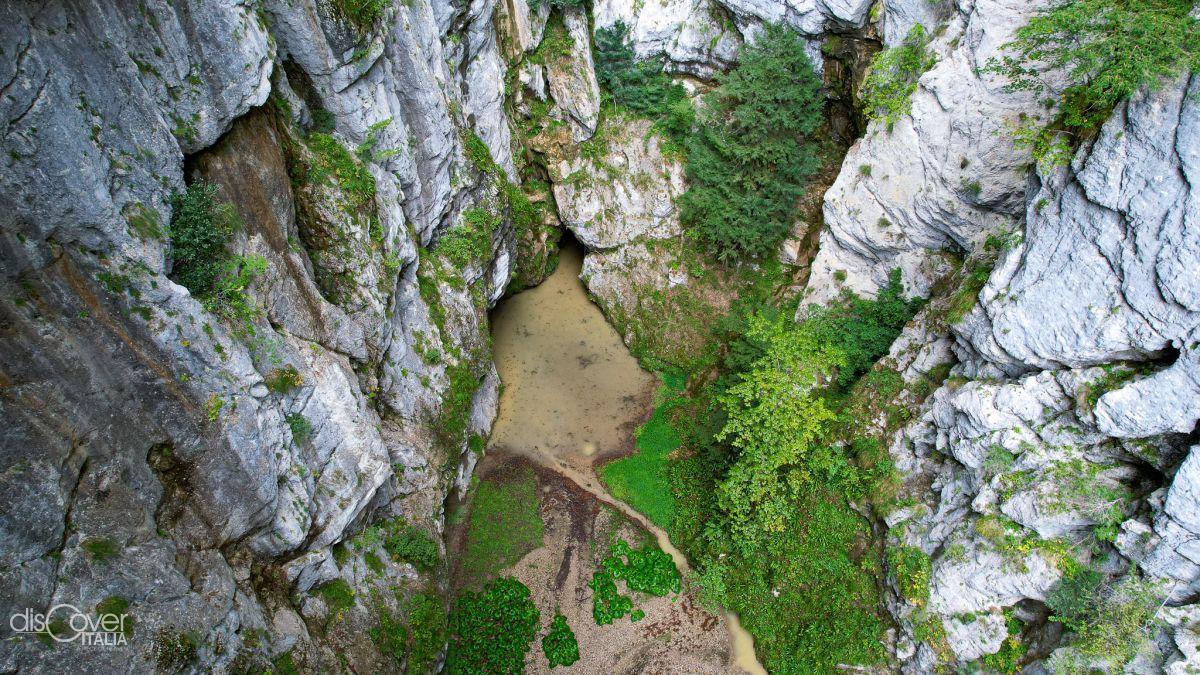
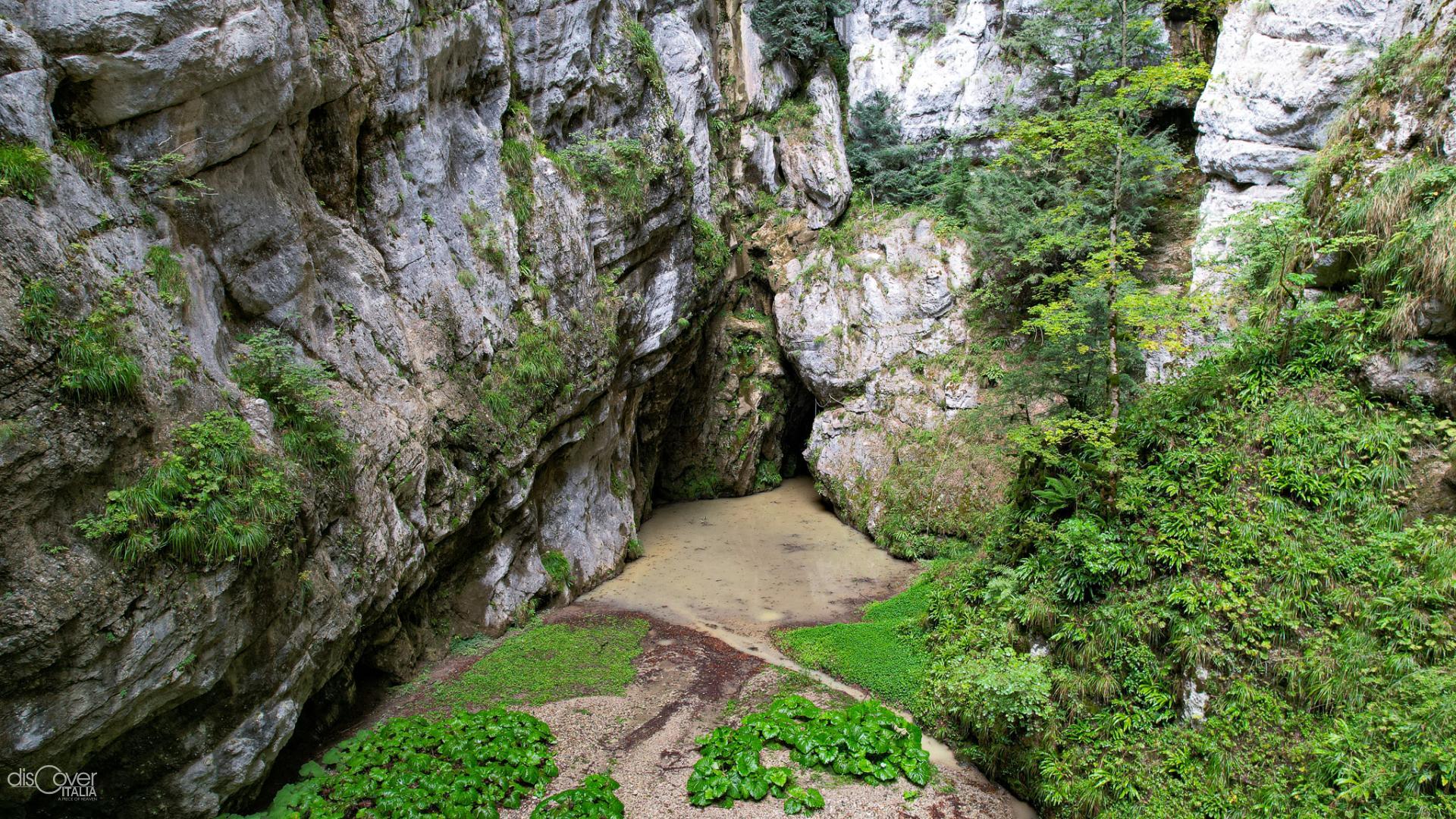
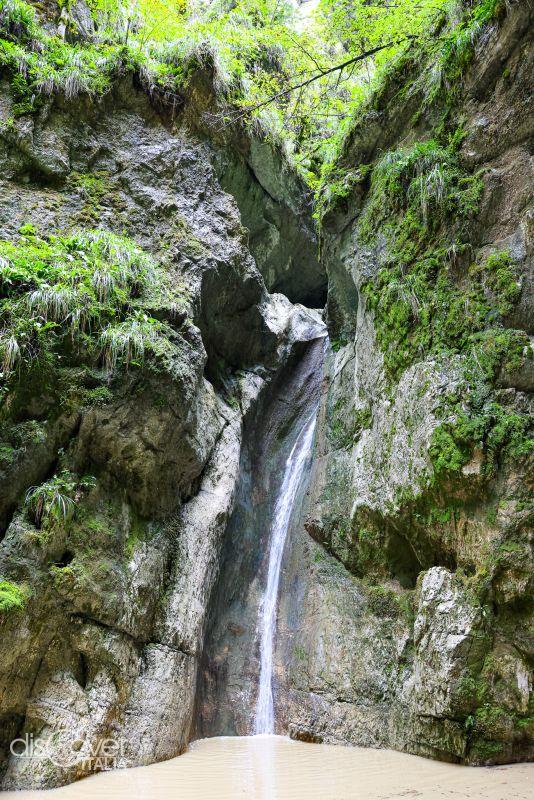 It took nature millions of years to dig and chisel the sinkhole a hundred meters deep in the belly of the mountain, with sheer walls covered by thriving vegetation. At the bottom of the chasm, a cave opens up, where the waters coming from higher altitudes collect, before sinking into the belly of the earth, to then reappear further downstream, at the source of the Bussento in the Varco La Peta area, in Montemezzano.
It took nature millions of years to dig and chisel the sinkhole a hundred meters deep in the belly of the mountain, with sheer walls covered by thriving vegetation. At the bottom of the chasm, a cave opens up, where the waters coming from higher altitudes collect, before sinking into the belly of the earth, to then reappear further downstream, at the source of the Bussento in the Varco La Peta area, in Montemezzano.
That precious water feeds an aqueduct and it was to preserve its purity from the cloudiness that occurred when it rained that in the 1970s a tunnel was opened at the base of the sinkhole to allow the rainwater to flow out. The tunnel dug into the rock, in favorable weather conditions and appropriately guided, allows you to reach the base of the "affunnaturo" and enjoy a natural spectacle of rare beauty. You prepare for it by tackling the journey of about 500 meters in the darkness of the tunnel with electric torches, before finding the light which suddenly floods the scene from above, barely shielded by the branches of the trees around the elliptical outline of the mouth of the sinkhole.
You find yourself, therefore, at the bottom of the crater, surrounded by high walls of limestone rock populated by an extraordinary variety of hygrophilous plants. And welcomed by the murmur of a suggestive waterfall, which forms a lake immersed in the ever-luxuriant vegetation.
No less intriguing is the route that can be taken on foot to reach the entrance to the gallery. From the fountain near the Inferno Bridge, follow the course of the Bussento river for a stretch, crossing lush woods with an important presence of the rare black hornbeam and yew.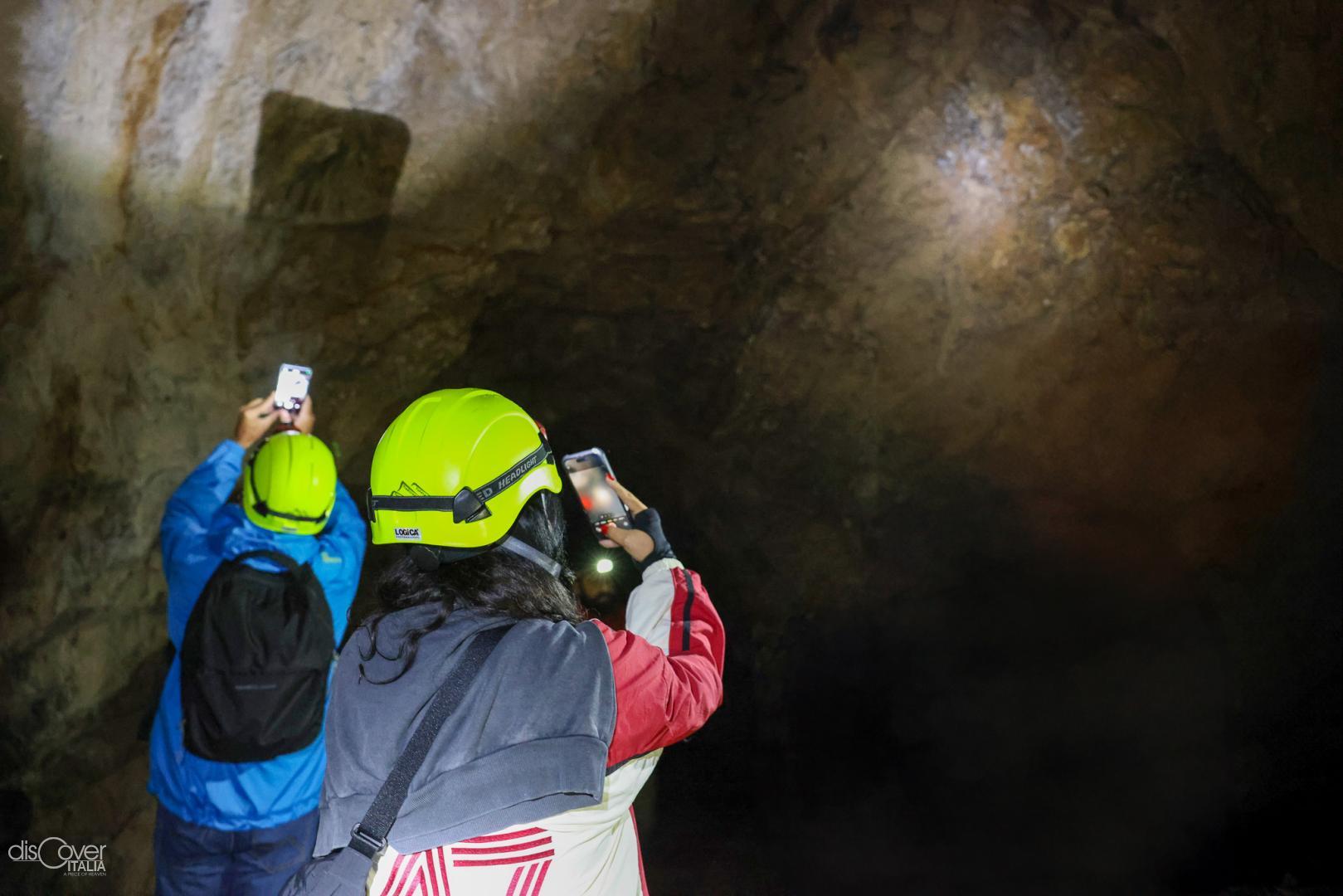
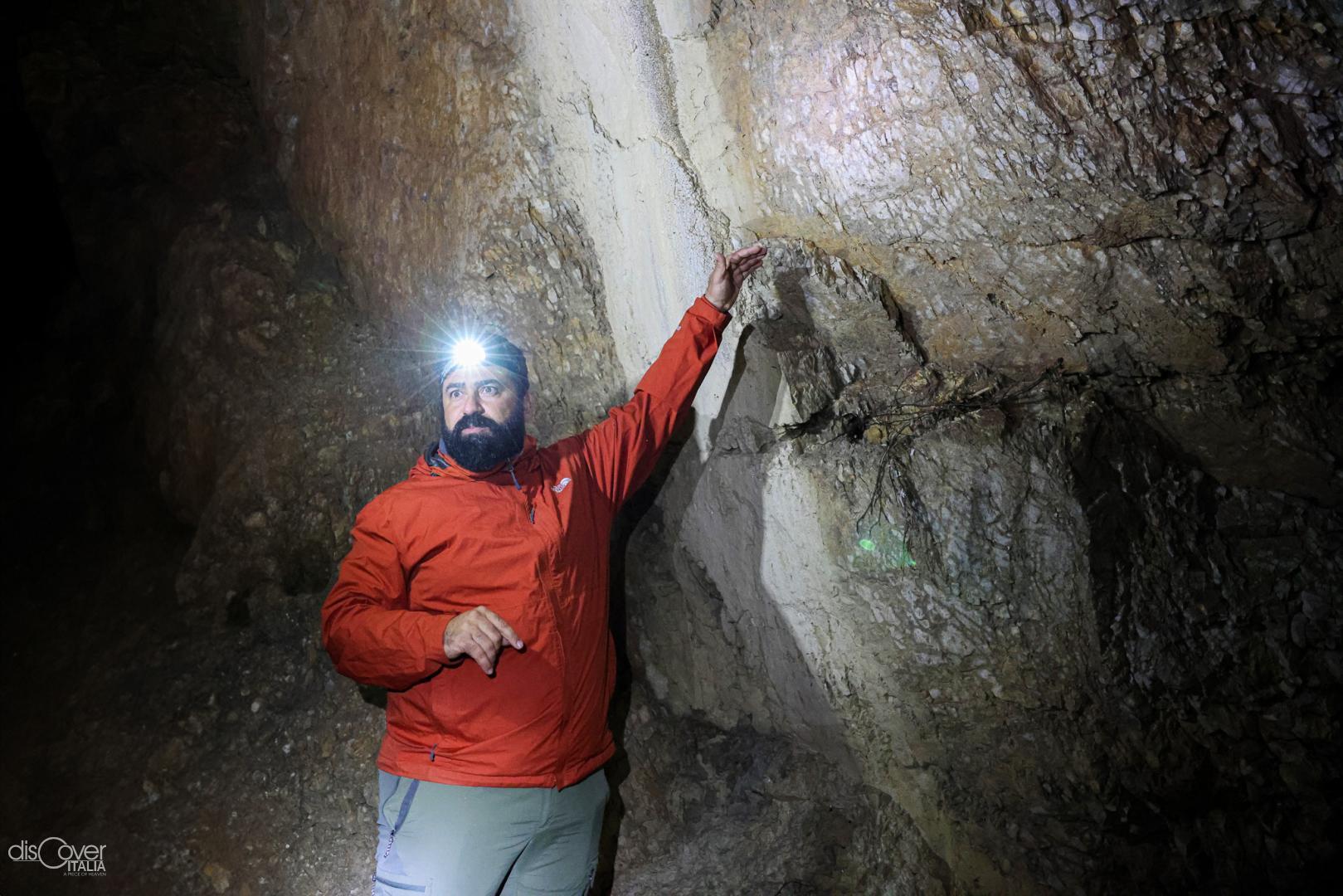
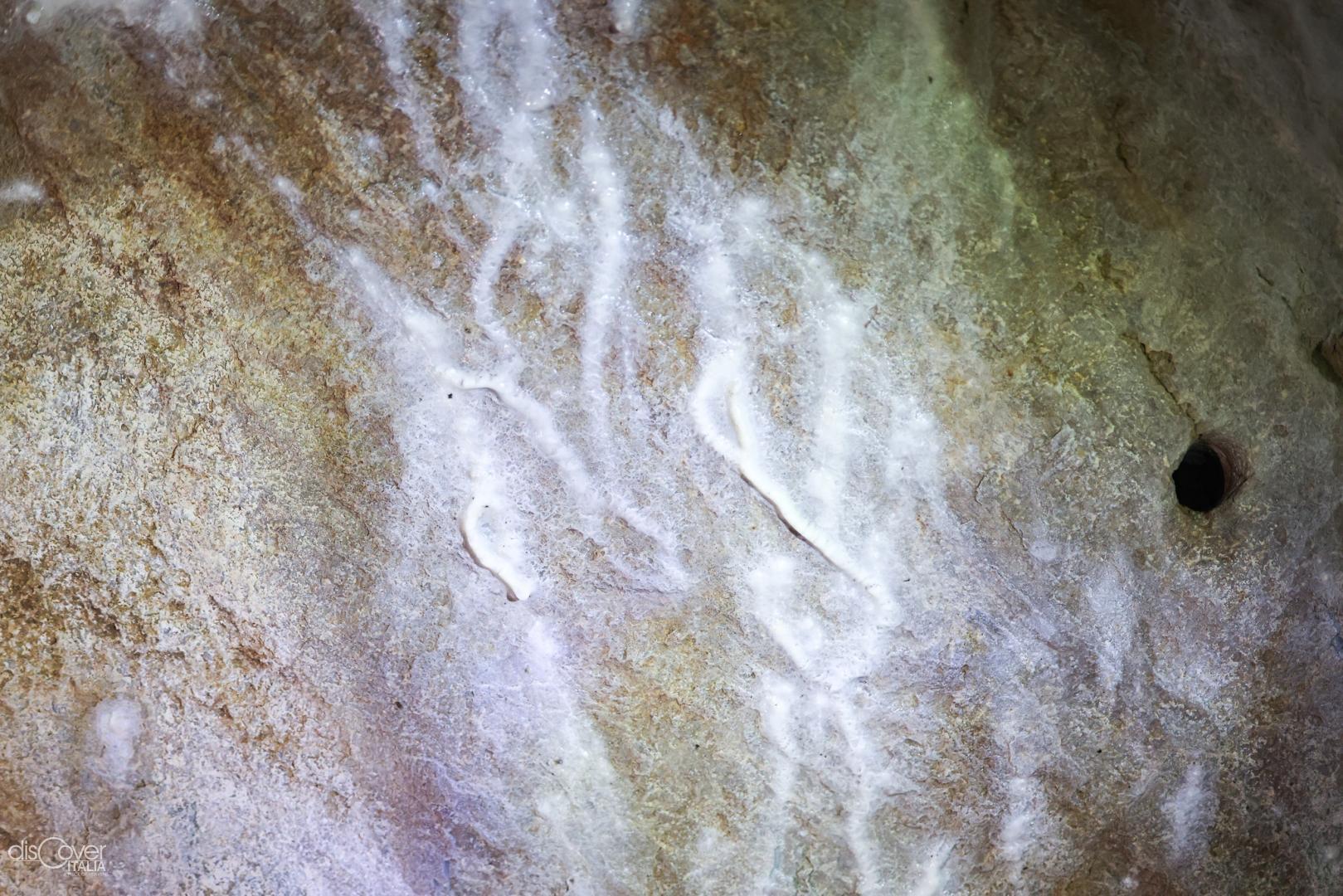
©All Rights Reserved @DiscoverCampania

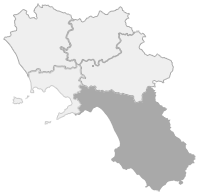



Comments powered by CComment